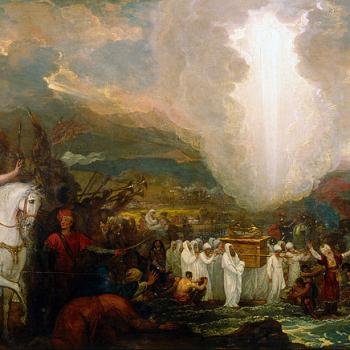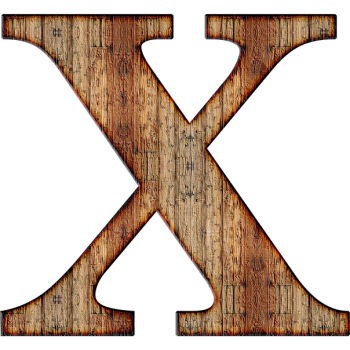Lectionary Reflections
Exodus 14-15
Easter Sunday
April 20, 2014
As Monty Python was fond of saying, "And now for something completely different." I know that the great majority of you preachers will turn to the Gospel of John 20 this Easter and will reflect on Mary's confusion about the identity of Jesus, on his demand that she not hold on to him, and her glad claim to the disciples, "I have seen the Lord!" (See, we Hebrew Bible types do on occasion read the Second Testament.) I will leave that memorable scene to those who are better equipped than I to expound its wonders.
However, we progressive Christians, or better said this progressive Christian, have a caveat or two to express on this day of all days. It remains finally impossible for me to believe that a very dead Jesus somehow has burst back into the world of the living. Yes, I know that "with God all things are possible," but my scientific credulity only strains so far. I simply cannot accept that on this day we are announcing and celebrating (usually very loudly and raucously) that a corpse has been resuscitated—again, that the focus of our attention is on the living body of Jesus. Since I believe that all of this is a sacred narrative, a story theology, I cannot focus on Jesus; my focus must always be on God. God, it seems, on Easter Day and on every other day is finally the God of life, fully opposed to the powerful and ever-present forces of death.
The story of Jesus' resurrection is hardly the first story of such an event in history. From the most ancient times, human beings have told the story of gods who were dead, either died or killed, who against all expectations appear again fully alive and active in the world. That is certainly one of the world's oldest stories. Tammuz of the Mesopotamian valley was such a dying and rising god. The Egyptians spoke for millennia of Set, the dismembered one who was pieced together and brought back to life each year. The Canaanites sang of Baal who each spring was again alive in the trees and the grasses and the gamboling newborn lambs.
And there were the Hebrews, who built their very lives on the certain conviction that their God, YHWH, had, because of unbreakable love for them as a people, led them out of the horrors of Egyptian slavery, through the forbidding Sinai wilderness, into and out of the terrible Sea of Reeds, and at last into the land of promise. They proclaimed in story and song that on the west bank of that sea they were the hopeless captives of the cruel pharaohs, while on the east bank of the sea they were the people of YHWH. This is precisely the resurrection story of Israel.
Certain facts surrounding this story must be noted. Despite three millennia of searching, probing, digging, exegeting, and speculating, not a single historical clue has been discovered that could pinpoint where any of these things actually happened. This is, of course, actually as it should be. This is not, plainly not, any sort of historical event. If one visits the Sinai today, trekking through what is actually a fairly small and sparsely populated desert place, any biblical clues (Pi-hahiroth, Migdol, Baal-zephon [Ex. 14:2]) are completely vague and might be located in any number of spots on a middle-eastern map. And there is the location of the sea itself. Despite the long tradition of naming it the Red Sea, the Hebrew says "Sea of Reeds," a marshy place somewhere east of the slave pits of Egypt. Since reed marshes mark many square miles of northern Sinai territory, the search for the Sea of Reeds is hopeless. But that is the point. No Hebrew, no later Israelite wants any of us to don our archaeologist's garb, and Indiana Jones-like grab a long and lethal whip, and head off to the Sinai searching for the Sea or the mountain or the trails of the ancients.
This is a story of resurrection, for Israelites and later Jews the story of resurrection, and the focus is squarely on YHWH. When the grumbling and then terrified Israelites find themselves trapped between the forces of pharaoh and the angry waves of the sea (Ex. 14:9), they scream at Moses that their freedom has turned to imminent death. Plenty of graves in Egypt, Moses, they shout; why bring us out into this place where death is even more certain and even more horrendous? Moses' response makes the central point of this resurrection tale. "Do not be afraid! Stand still and see the salvation that YHWH will work for you today. The Egyptians whom you see today you will never see again. YHWH will fight for you, and you must only stand still" (Ex. 14:13-14).
And with that grand oration echoing in Israelite ears, Moses stretches out his hand over the sea and two separate and distinct events occur. We of course are most familiar with the "walls of water on their right and on their left" (Ex. 14:22), made indelible in our minds by the Cecil B. DeMille epic of six decades ago (done incidentally using Jello, resulting in the only Oscar the film won). But that is only one of the stories told in this complex account. There is another: "YHWH drove the sea back by a strong east wind all night, and turned the sea into dry land" (Ex. 14:21). Here we witness some sort of long tidal event, rather than the instantaneous piling up of divided water walls. An event as magical and grand as this can hardly be confined to one telling! There are two accounts of creation, and most famously today, four very different tellings of the resurrection of Jesus.





